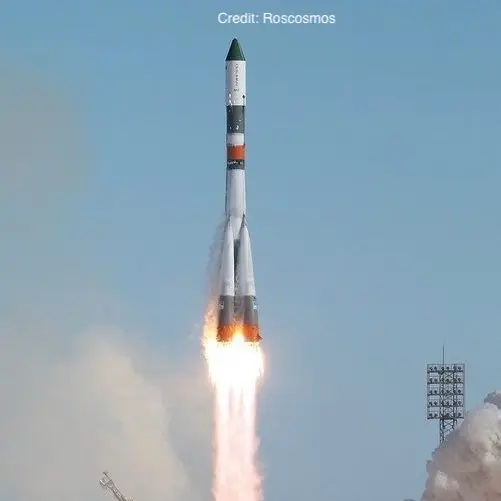Soyuz 19 (Apollo-Soyuz)
Launch Success
Liftoff Time (GMT)
12:20:00
Tuesday July 15, 1975
Mission Details
Launch Notes
The first time an American and Soviet ship has ever met. The cosmonauts named the spacecraft Союз ("Union").
Soyuz 19 (Apollo-Soyuz)
Apollo-Soyuz was the first international space mission, carried out jointly by the United States and the Soviet Union in July 1975. Millions of people around the world watched on television as a U.S. Apollo module docked with a Soviet Soyuz capsule. The project, and its memorable handshake in space, was a symbol of détente between the two superpowers. It is generally considered to mark the end of the Space Race, which had begun in 1957 with the launch of Sputnik 1. The mission was officially known as the Apollo-Soyuz Test Project (ASTP) (Russian: Экспериментальный полёт «Аполлон» - «Союз», Eksperimentalniy polyot Apollon-Soyuz). The Soviet craft was numbered Soyuz 19. In contrast, the US vehicle was unnumbered, as it was left over from the canceled Apollo missions; it was the last Apollo module to fly. The three U.S. and two Soviet astronauts performed both joint and separate scientific experiments, including an arranged eclipse of the Sun by the Apollo module to allow instruments on the Soyuz to take photographs of the solar corona. The pre-flight work provided useful engineering experience for later joint US-Russian space flights, such as the Shuttle-Mir Program and the International Space Station. This is Soyuz's 33th flight, and 19th crewed flight. The Soyuz is a Soviet crewed spaceship, developed to made manned lunar missions. This version called 7K will fly 4 times on the giant launcher N1, and several tens of times on Proton to fly over the Moon, which will be successful during the mission Zond 4. Soyuz will become the first spacecraft to transport living beings to the Moon during the flight of Zond 5, with two turtles. Subsequently, it is adapted to low orbit and will fly on the Soyuz launcher to serve the Salyut and Mir stations and the ISS.
Low Earth Orbit
1 Payload
6,790 kilograms
Rocket


Manufacturer
RKK EnergiyaPrice
$20.00 million
Rocket
Height: 51.32m
Payload to Orbit
LEO: 6,860 kg
GTO: 0 kg
Liftoff Thrust
4,456 Kilonewtons
Fairing
Diameter: 3m
Height: 15.59m
Stages
3
Strap-ons
4
Launch Site
Stats
Soyuz U
17th
Mission
4th
Mission of 1975
RKK Energiya
946th
Mission
50th
Mission of 1975
1975
69th
Orbital launch attempt